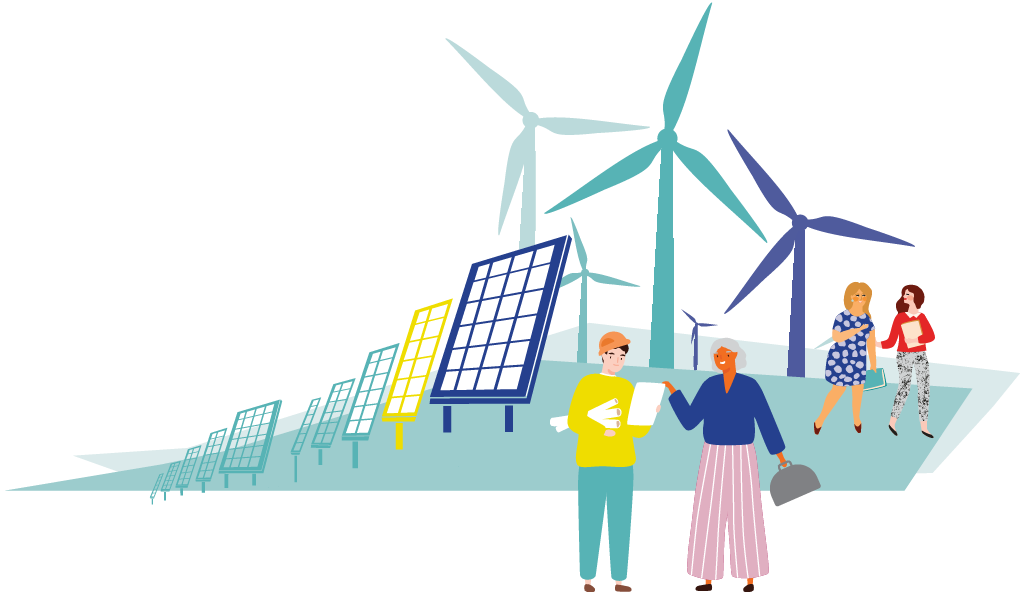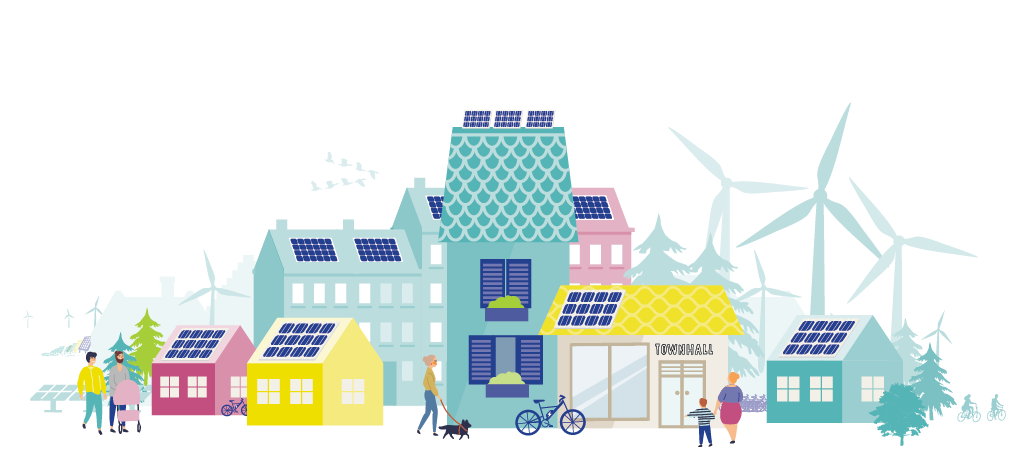News
The social impact of energy communities: ten benefits they bring
The transition to climate neutrality cannot be achieved through technology and markets alone. The participation of citizens and local communities is crucial to making this transition efficient and just, and ensuring that everyone shares its economic, environmental and social benefits. Energy communities are a collaborative model that constitutes the perfect vessel for directly involving citizens and local communities in renewable energy facilities. As energy communities can have a strong social impact, they play an important role in society - beyond clean energy production. Here are ten examples of economic, social and environmental benefits of energy communities!
1. Energy communities provide local and clean energy
Through their projects, energy communities aim first and foremost to guarantee their members access to clean and local energy. By producing their own energy, they also protect their members from price fluctuations in the energy market, which is especially relevant in times of crisis, such as the one we are living in today. For example, last year the energy prices of commercial energy providers in Belgium were consistently more unsteady and expensive than the ones of the Belgian energy cooperative Ecopower.
Moreover, the community energy model highlights the fact that energy is a common good to which everyone should have access. It makes members aware of the right to access, but also of the responsibility to treat energy as a scarce good, which promotes energy savings and energy optimisations.

2. Energy communities mobilise local capital
By empowering citizens and members of the local community to invest in projects and services, energy communities mobilise local capital. At European level, it is estimated that citizens could mobilise more than €200 billion for the energy transition by 2030.
Moreover, investing savings in local renewable energy projects reduces the money sitting in banks, preventing them from using it to keep on funding fossil fueled energy projects, the primary cause of the current climate crisis.

3. Energy communities strengthen local development
Thanks to their projects and activities, energy communities boost the competitiveness of local businesses, support key sectors, create new business opportunities and synergies, and foster cooperation. Moreover, as a result of their investments, energy communities create new jobs within local communities.
Research shows that community energy projects generate 2 to 8 times more local revenue than a project carried out by an external actor (as solar and wind power projects have shown). Unlike large private initiatives, which usually transfer the generated profits outside the community or the country (regardless of where the investment is made), energy communities distribute their profits locally. Their surpluses usually go to the members of the community or they are invested in local projects based on the needs of the community.

4. Energy communities contribute to the protection of the environment
Energy communities tend to be more respectful of the environment than large private companies, as they develop smaller-scale and locally adapted projects, and their impacts are monitored and evaluated by the citizens themselves. After all, it is citizens who decide on their own environment.

5. Energy communities help save energy
The cleanest form of energy is the one that is not consumed. Energy communities inform and raise awareness about energy saving, and promote rational energy use among their members. Research shows that members of energy communities use less energy than other consumers. In addition, energy communities develop projects and services to increase energy efficiency and contribute to its better management with innovative projects and solutions, such as shared mobility, demand response and storage.

6. Energy communities address the environmental crisis
By developing renewable energy sources projects, promoting the efficient use of resources, proposing holistic measures to live more sustainably (low carbon mobility, zero waste practices, etc.), and organising information and education campaigns; energy communities become schools of sustainability and help build the system needed to stop the climate crisis. Community energy allows citizens to take matters into their own hands and act on climate change together.

7. Energy communities fight energy poverty
Many community-owned energy projects support energy-poor households in their area. For example, when the island of Crete was hit by an earthquake in 2021, Minoan Energy Cooperative decided to cover the electricity needs of 50 families affected by the earthquake.
As organic parts of the local community, energy communities can identify vulnerable consumers (often overlooked by institutional programmes) and design appropriate solutions for them. In fact, when municipal projects, services and actions are developed in cooperation with energy communities, their impact is greater.

8. Energy communities contribute to the social acceptance of renewables
Energy communities promote participatory planning and give neighbours the opportunity to participate in and benefit from the investment in new clean energy projects. Involving neighbours in the first steps of a project significantly increases the acceptance of renewables by the local community. A recent survey in ten European countries shows that the social acceptance of renewable energy sources increases significantly through energy communities, due to parameters such as the creation of local jobs and the reduction of energy prices.

9. Energy communities strengthen social cohesion
Participation and action within energy communities seem to increase social cohesion, as interaction and dialogue among members are enhanced. Members of an energy community work together and develop a common identity, which helps build loyalty and trust in the community. Through participatory processes, they also find collective solutions to issues that members might not be able to address individually.
Moreover, community energy projects engage the wider society by informing citizens and inviting them to participate in the design of renewable energy production and energy saving projects. Local citizens also benefit from initiatives funded by energy communities. For example, some energy communities have financed the construction of a local sustainable concert hall, while others have built a charging point for electric bicycles.

10. Energy communities reinforce democracy
Energy communities are schools of democracy because their governance model familiarises citizens with participatory decision-making processes. When members participate in the energy community, they acquire knowledge and develop skills that can be applied to other activities and interactions in other areas of life. Institutions and local businesses that cooperate directly or indirectly with energy communities also experience a positively impact. Finally, by endorsing equal participation, energy communities mitigate differences related to age, gender, etc.

More social impacts related to energy communities
The benefits described above are just some of the many social benefits generated by community energy projects. Heinrich Böll Foundation Greece and ELECTRA Energy cooperative have published a report analysing the social impact of energy communities in Greece. The research identifies more than 20 benefits and highlights some best practices in Greece.